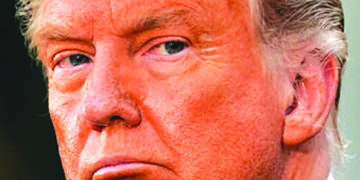That is an average of 19 wannabees for each of the 290 seats in the Majlis. The Council of Guardians will now begin a review of each applicant and in several weeks will announce which ones have been approved and will see their names on the ballot.
The vast majority will likely be rejected, as in the past, Just 428 or 8 percent of the applicants are women. One of them is Parvin Ahmadi-nejad, 49, the president’s sister, who is currently an elected member of the Tehran City Council.
Curiously, she filed to run from Garmsar, where she was born, in Semnan province rather than from Tehran.
Despite reformist talk of boycotting the elections, some reformists did register, including Mohammad-Ali Kouzegar and Asgar Eslamdoust, who served in the one reform-dominated Majlis from 2000 to 2004.
They also filed to run in 2004 and 2008, but saw their applications rejected both times. It isn’t yet known how many reformists or even how many incumbents filed to run during the one-week filing window that closed last Friday evening.
The total number was 30 percent lower than for the last Majlis elections four years ago. That may be in part because of the momentum building for a reformist boycott.
But more likely it is a result of the qualifications being raised. Four years ago, candidates required a bachelor’s degree; this year they require a master’s, though candidates who served in a previous Majlis are allowed to register with a bachelor’s degree.
Candidates must also be between 30 and 75 years old, of sound body and mind, have no criminal record, and uphold the values of the Islamic Republic.
This gives the Council of Guardians considerable leeway for rejecting candidates. Tehran is the largest constituency, electing 30 deputies. In Tehran, 1,066 wannabees registered.
That is 35 per seat or almost double the national average. In Tehran, 157 applicants were women more than a third of all those filing nationally even though only 10 percent of the seats are in Tehran.
The Tehran governor general said 100 of the Tehran applicants had bachelor’s degrees, suggesting an awful lot of former deputies had filed. Some 739 held master’s degrees and 201 had doctorates while a mere 19 or less than 2 percent had clerical degrees.
That added up to seven fewer than the total, but such numerical errors are quite normal.



















